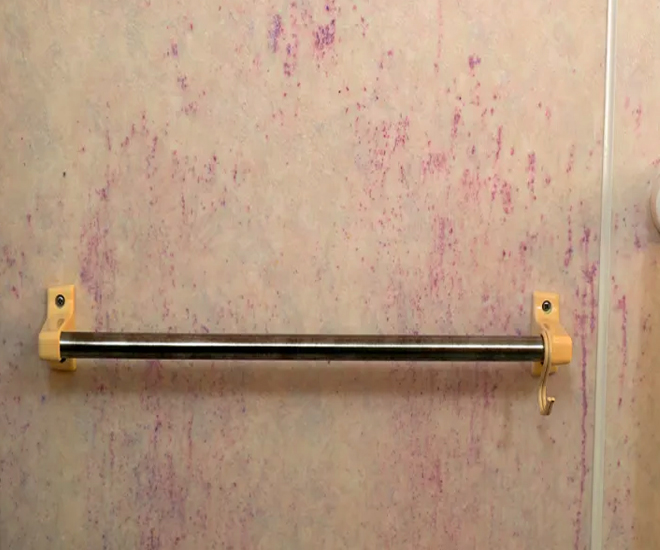
Whenever a discussion erupts about mold we often receive a question from people about how to get rid of pink mold 2024. Unlike, any regular mold this type is a bit different and if you are thinking pink mold is just an eyesore then you are sadly mistaken. Instead, pink mold is a potential health hazard, especially when it finds its way into our homes. No matter, whether lurking in the corners of our bathrooms or making its presence known in the kitchen, dealing with pink mold requires more than just a surface-level clean-up. Therefore, today we are going to guide you by exploring everything you need to know about pink mold. We will cover from its causes and dangers to effective removal methods and prevention strategies.
What is Pink Mold and What Causes it?
First and foremost you need to remove this misconception from your mind that Pink mold is actually a mold. Indeed, pink mold is actually a type of bacteria and not mold that thrives in environments that are damp, warm, and rich in organic matter. Furthermore, the pink or pinkish-orange stains it leaves behind can be found on various surfaces, including shower walls, grout, sinks, and even household items. Despite, there being a large number of people who refer to it as a mold pink mold is a species of bacteria known as Serratia marcescens.
In addition, poor ventilation, excess moisture, and organic residues are a few of the several factors contributes to the growth of pink mold. Common culprits include poorly ventilated bathrooms, stagnant water, soap scum buildup, and food residues in kitchens.
Is Pink Mold Dangerous?
Instead, of shedding light on as people often ask whether pink mold is dangerous in the shower, bedroom, or bathroom we thoroughly examine whether pink mold is hazardous or not. No doubt, pink mold is not as notorious as black mold. However, this doesn’t prove pink mold is harmless. Rather, we should know pink mold can pose health risks, particularly to vulnerable individuals. Furthermore, exposure to pink mold can lead to respiratory issues, allergic reactions, urinary tract infections, and gastrointestinal problems. Additionally, individuals with compromised immune systems, respiratory conditions, or allergies may be more susceptible to the adverse effects of pink mold exposure.
Learn all about: What is the Most Dangerous Mold to Humans
How to Get Rid of Pink Mold: Effective Removal Methods
When it comes to removing pink mold, a thorough and systematic approach is essential. Here are some effective methods for eliminating pink mold from your home:
Baking Soda Paste Method
Firstly, you have to create a paste with baking soda and liquid dish soap. After that, apply the paste to the affected areas. Remember, when applying you need to focus on pink mold stains. Furthermore, you should use a scrub brush or sponge to scrub the surface thoroughly, and then rinse with water. Baking soda acts as a natural abrasive, helping to break down and remove stubborn mold stains.
Bleach Solution
Prepare a mixture of bleach and water (1 part bleach to 10 parts water) in a spray bottle or bucket. Spray or apply the solution to the affected areas, ensuring complete coverage. Allow the bleach solution to sit for at least 10-15 minutes to effectively kill the mold. Afterward, scrub the surface with a brush or sponge and rinse thoroughly with water.
Vinegar Treatment
When it comes to mold killers vinegar is one of the most effective natural remedies for the task. For that purpose, you just need to pour some undiluted vinegar into a spray bottle and apply it directly to the mold-infested areas. After that, you have to wait for about an hour or two before scrubbing the surface with a brush or sponge. What’s more, vinegar not only kills mold but also helps prevent its regrowth.
Learn all about: How to Remove Mold from Crawl Space Yourself with Vinegar
Preventing Pink Mold Regrowth: Essential Tips
Prevention is the key to keeping pink mold at bay and maintaining a healthy indoor environment. Here are some essential tips to prevent pink mold regrowth:
- Clean bathrooms and kitchens regularly, paying special attention to areas prone to moisture buildup, such as shower stalls, sinks, and countertops.
- Never neglect proper ventilation. Therefore, use dehumidifiers and exhaust fans in damp areas. Furthermore, open windows to ensure ventilation.
- Fix any plumbing leaks or water damage promptly to prevent moisture accumulation.
- Use mold-resistant products and materials in areas prone to mold growth, such as mold-resistant paint and caulk.
Learn all about: Best Bathroom Mold Prevention Tips
What is Pink Mold Smell Like
Pink mold typically doesn’t have a strong odor on its own. However, it can sometimes contribute to a musty or earthy smell, especially when it grows in damp or humid environments like bathrooms or kitchens. Therefore, if you are feeling any such unusual smell then immediately investigate and take all necessary steps to address any mold growth promptly.
Conclusion
In conclusion, understanding and effectively dealing with pink mold is crucial for maintaining a healthy indoor environment. By following the proven methods outlined in this guide, you can tackle pink mold infestations head-on and prevent their recurrence. However, for more complex mold issues or professional assistance, consider reaching out to Miami Mold Specialists. Their expert team offers comprehensive mold inspection, remediation, and prevention services tailored to your specific needs. Therefore, don’t let pink mold compromise your health and comfort. Take action today and learn more about How to Get Rid of Pink Mold 2024 with Miami Mold Specialist’s expertise.







